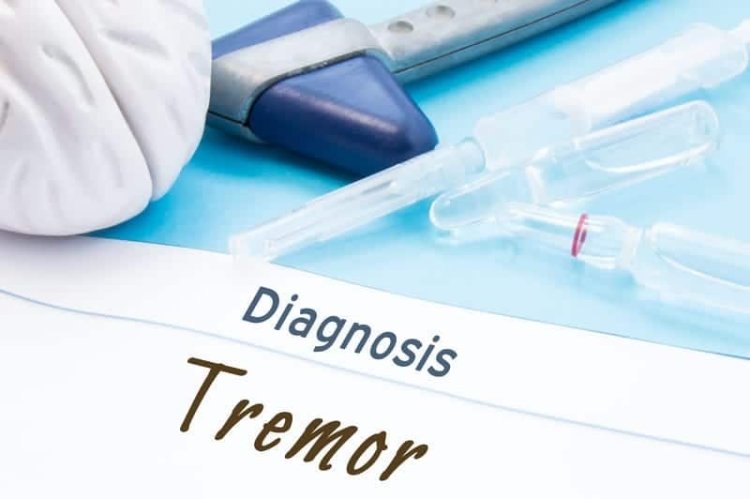Essential Tremor: Latest Treatments to Reduce Shaking
Essential tremor is a neurological condition that causes involuntary and rhythmic shaking, often in the hands. This condition can also affect the head, voice, legs, or other body parts, making everyday tasks like writing, drinking, or tying shoelaces more difficult. Although not life-threatening, essential tremor can significantly affect a person’s confidence and quality of life. Fortunately, medical advancements and lifestyle changes can help manage and reduce the symptoms, allowing individuals to regain control over their daily lives.

What is Essential Tremor?
Essential tremor is one of the most common movement disorders, often associated with a genetic predisposition. It is sometimes referred to as familial tremor, as it can run in families. The condition typically becomes more noticeable after age 40, although it can occur at any age.
Some common symptoms include:
-
Shaking in the hands, head, or legs.
-
Difficulty with balance or walking due to leg or core muscle tremors.
-
Speech difficulties when tremors affect the voice box.
-
Head movements such as shaking side-to-side or up-and-down.
The exact cause of essential tremor is not well understood, but factors like overactive thyroid glands, alcohol consumption, neurological conditions, and stress can contribute to its onset. Unlike Parkinson’s disease, essential tremor is not associated with an underlying degenerative condition, but its symptoms can still progress over time.
Understanding Essential Tremor Treatment
Not everyone with essential tremors requires treatment. Lifestyle adjustments may be sufficient for those with mild symptoms to manage the condition. However, several treatment options are available for individuals whose symptoms interfere with daily life. These treatments focus on reducing the severity of tremors and improving overall function.
1. Medications
Medication is often the first line for essential tremor treatment. Doctors may prescribe:
-
Beta-blockers: Commonly used for high blood pressure, these medications can also help control tremors.
-
Anti-seizure drugs: If beta-blockers are ineffective, anti-seizure medications can help manage involuntary movements.
-
Tranquilisers: In cases where anxiety worsens symptoms, tranquillisers may provide relief.
2. Botox Injections
Botulinum toxin injections are another option for managing essential tremor. These injections target specific muscles and can significantly reduce tremors in areas like the hands or voice box. However, the effects are temporary and require periodic administration.
3. Physical Therapy
Physical therapy can play an important role in managing essential tremors. A trained therapist can help strengthen muscles, improve coordination, and teach strategies to adapt to tremors. Exercises designed to enhance motor skills can also make everyday tasks easier.
4. Surgical Interventions
Surgical options may be considered when symptoms are severe and do not respond to other treatments. These include:
-
Deep Brain Stimulation (DBS): This procedure involves implanting electrodes in the brain to deliver electrical impulses that help reduce tremors. DBS is particularly effective for individuals with significant symptoms that impact their quality of life.
-
Focused Ultrasound Thalamotomy: This is a non-invasive treatment that uses sound waves to target the areas of the brain causing tremors. It offers an alternative to traditional surgery and is becoming increasingly popular for its precision and minimal recovery time.
Living with Essential Tremor: Tips for Symptom Management
In addition to medical treatments, lifestyle changes can make a significant difference in managing essential tremors. Here are some suggestions to help reduce symptoms and maintain a better quality of life:
-
Limit caffeine: Drinks like coffee or tea can worsen tremors, so it is best to avoid them.
-
Reduce alcohol intake: While alcohol may temporarily reduce tremors in some individuals, excessive consumption can lead to dependency and worsen symptoms over time.
-
Manage stress: Stress and anxiety are known to exacerbate tremors. Relaxation techniques like yoga, meditation, or deep breathing exercises can help.
-
Quit smoking: Nicotine can aggravate tremors, so avoiding cigarettes is recommended.
-
Use assistive devices: Tools like weighted utensils or specialised pens can make daily tasks easier.
Adopting these habits and medical guidance can significantly improve one’s ability to cope with essential tremors.
When to Seek Medical Advice
If tremors interfere with your daily life or symptoms worsen over time, it is essential to seek medical attention. A healthcare provider will conduct a thorough evaluation, including physical exams and a review of your medical and family history. Early diagnosis and intervention can help prevent the condition from becoming more disruptive.
Doctors may sometimes recommend tests like an MRI or CT scan to rule out other neurological conditions. Sharing detailed information about your symptoms and any family history of tremors can help determine the best course of action.
Proactive Steps for a Better Tomorrow
Essential tremor is a condition that requires a proactive approach to management. Whether through medication, therapy, or surgical options, individuals have a range of treatments available to improve their quality of life. While some may benefit from simple lifestyle changes, others may require more advanced interventions to reduce symptoms effectively.
For those seeking guidance, hospitals with a strong focus on neurological care provide the expertise needed to manage essential tremors. Exploring these resources can help individuals make informed decisions about their health and treatment options.
Conclusion
Essential tremors may pose challenges, but with the proper treatment and lifestyle changes, it is possible to reduce symptoms and lead a fulfilling life. From medications and physical therapy to advanced surgical procedures, many ways to address the condition effectively exist. Early consultation with a healthcare provider can ensure timely treatment and better management of symptoms.
Take the first step towards steady hands and a constant life by exploring the available treatment options and adopting a proactive approach to care.
What's Your Reaction?



















